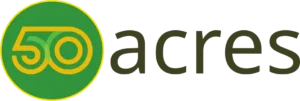The name Ceylon has become synonymous with the world’s finest tea for the last hundred and fifty-five years.
Tea planting is an integral part of Sri Lanka’s (formally known as Ceylon) culture and history. In 1824, the British brought the first tea plant from China and planted in the Royal Botanical Gardens in Peradeniya, Kandy.
43 years later, in 1867, Scottish planter James Taylor, it began with a 19-acre estate called Loolecondera in Hewaheta, Kandy. The History of Ceylon Tea

Dutch (1658-1796) experimented coffee planting in Ceylon. However, large scale commercial coffee production didn’t happen until the British occupation (1815-1948). By 1860 Ceylon was a one of the major coffee producing nations in the world (Brazil and Indonesia were the other two). At the peak 275,000 acres were coffee cultivated land. In 1869, the coffee rust epidemic broke out in Ceylon. The disease devastated coffee industry destroying coffee plantations.
James Taylor (born in Scotland) had arrived in Ceylon in 1852 and settled down in Loolecondera estate in Delthota. The city is 34km north of Kandy – located in central Sri Lanka. Onset of the coffee epidemic James Taylor visited India in 1866 to study growing tea. Upon returning Taylor planted a 21-acre plot of tea on Loolecondera in 1867.

Taylor set up his own tea make shift ‘factory’ in the verandah of his bungalow in Loolecondera Estate and begin to experiment with tea. The tea leaves were rolled by hand and the firing done on clay stoves over charcoal fires. After successful results and a year later, he exported 23 pounds of tea to London. James Taylor worked with Scottish merchant Thomas Lipton to develop the tea industry in Ceylon. Taylor continued to develop the tea industry with his innovative thinking until he died in 1892 at the age of fifty-seven. He lived in Sri Lanka for more than half of his lifetime.
In 1878 Sri Lanka’s tea acreage grew, to 4,700 acres, 32,000 acres in 1883, and 364,000 acres in 1898. By the early 20th century, more than 384,000 acres of tea had been cultivated. Currently there are 548,573 acres of tea in Sri Lanka.
The History of Ceylon Tea
Links for more info: (History of Ceylon Tea)








